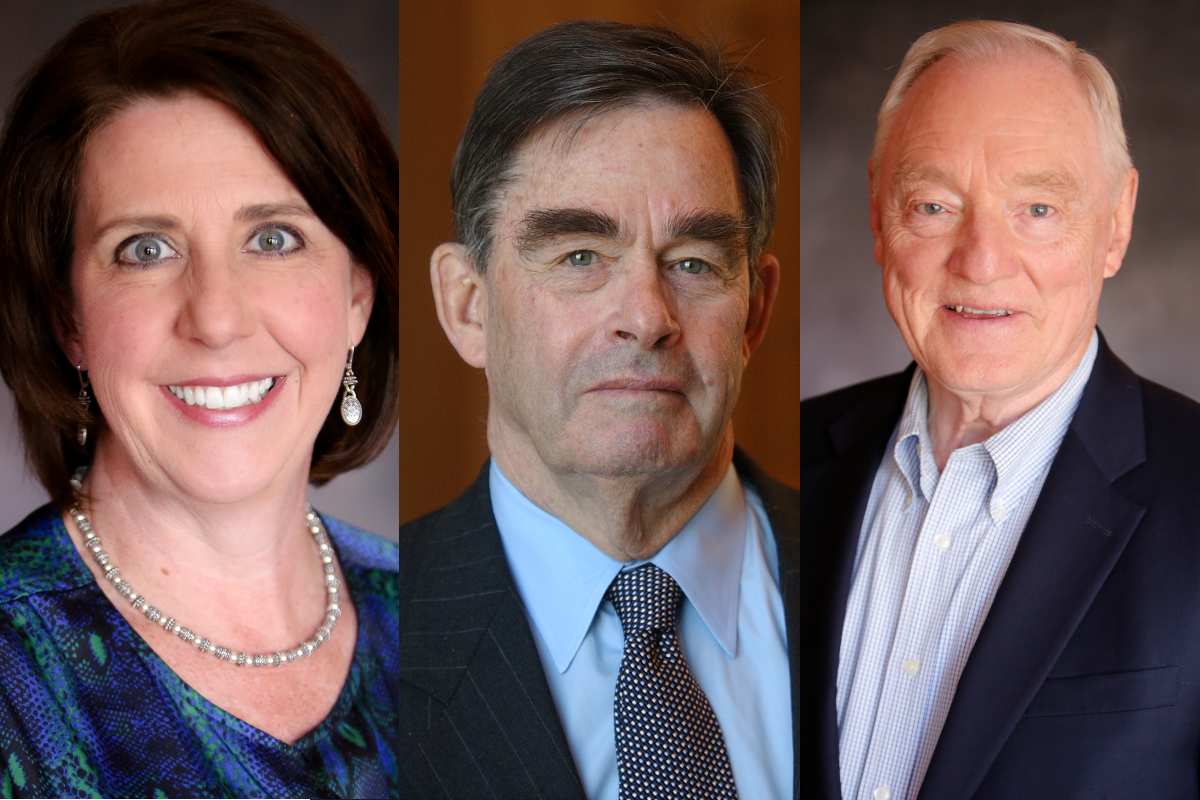The founders’ original vision was simple: create a community foundation shaped by Catholic identity. Since its establishment in 1992, the Catholic Community Foundation of Minnesota (CCF) has come to be recognized as an experienced and trusted partner. In 2020, the Minnesota Catholic Relief Fund (MCRF) demonstrated CCF’s ability to inspire philanthropy, convene experts, and disburse funds to meet the greatest needs in our Catholic community. While the MCRF highlights how much CCF has matured as an organization, these efforts wouldn’t have been possible without the many visionary leaders who have shared their time and talent over the years.
Investing for the Future
In the early 1990s, Tom Gainor was part of a select group Archbishop Roach charged with evaluating the feasibility of a Catholic community foundation in Minnesota. As the idea became a reality, Tom joined CCF’s first board of directors. Having recently retired from his position at the Federal Reserve Bank of Minneapolis, he remembers vividly what it was like to launch a community foundation from scratch. “We had to set up an office, hire and pay staff, and assure investors we could give them the services they needed if they invested with us,” he recalls. “Fortunately, we had sponsorship from some prominent Catholics willing to risk their money right off the bat.”
Offering a way to fund Catholic causes in perpetuity helped attract donors who might have otherwise invested with one of the more established community foundations. “While they did a lot of good for the community, people with donor advised funds at one of the secular public foundations couldn’t make legacy gifts to Catholic organizations. It went against their charter,” explains Tom. “We offered people who supported Catholic ministries of all kinds a way to use legacy funds to provide future support.”
Serving Present Needs and Planning for the Future
CCF was far more established in 2007, when Mimi Daly Larson was hired to advise the organization on its plans for marketing and outreach. In 2011, she was invited to join the board, where she applied her expertise in development and organizational planning to guide the foundation through two strategic planning processes. “Strategy, focus, and talent have put CCF on a path for accelerated growth,” says Mimi. “We can’t control macro trends, but we can control decision-making — and CCF has made some good ones.”
Mimi points out that CCF’s focus on closing the budget gap and becoming financially self-sustaining attracted more donors and elevated CCF’s capacity for grantmaking. “Over the last decade CCF has become an important source of funding,” says Mimi. “It’s directed funds to some of the most critical needs in the community.”
She cites the MCRF as one accomplishment that proves CCF’s capabilities. “In a time of need, to rally those kinds of resources and quickly direct them where they’re needed most demonstrates all the hard work that’s been done by the founders, board members, and staff.”
A Shared Dream
Few people can appreciate CCF’s evolution more than Jim Mullin, CCF’s first president. “It took a lot of people from different backgrounds who generously offered their time to make all of this happen,” says Jim. “It’s become a shared dream.”
Jim points to CCF’s founding principles, which have guided it through many stages of growth. “From the start we wanted to reflect our Catholic faith in all that we do,” he says. “It takes a lot of people to respond to a crisis, but they need to be animated by a core mission. CCF has that, and it hasn’t changed.”
Tom rejoined the board of directors for another nine-year term in 2011. As he reflects on his second term of board leadership, he takes great satisfaction in CCF’s current position, observing that it’s the largest Catholic community foundation in the country. “Good investment strategy together with good grant allocations to the community have contributed to the strength of CCF,” Tom says. “We can all take some pride and give a lot of thanks for how well CCF has done.”

